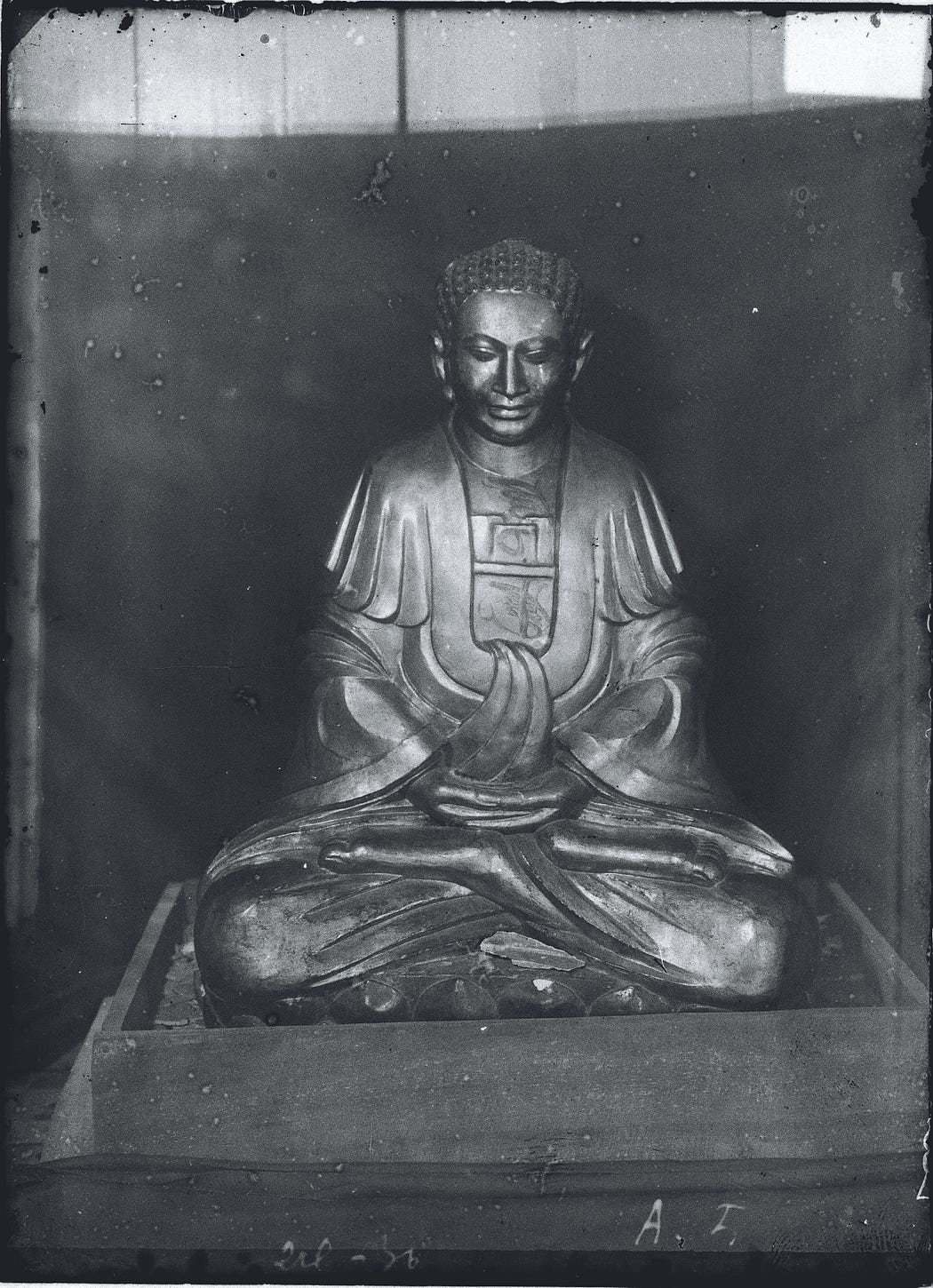Hidden Figures in Revealing Krishna
- Blog Post
- Digital Innovation
Hide-and-Seek with Transformed Statues

Among the many layers of integrative technology, collaboration (in every sense of the word), and conservation achievements, there’s another aspect to the exhibition Revealing Krishna: Journey to Cambodia’s Sacred Mountain, and the evidence is staring right at you — that is, at different periods of time, some of the sculptures have taken on alternate identities.

People who look alike, or doppelgangers, and those who use disguises to create alternate identities are intriguing phenomena. Incredibly, both can be found in Revealing Krishna.
The “Phnom Penh Krishna”

The Phnom Penh Krishna, whose fragments were mixed up with those of the Cleveland Krishna until last year, was initially overlooked by conservator Henri Mauger, when he worked at the site in the mid-1930s, due to its having been remodeled into a seated Buddha. In addition, the Phnom Penh Krishna was confused with an unnamed deity in a nearby cave on the other side of the same mountain — also transformed into a Buddha — which held a striking resemblance.

Unlike the Cleveland Krishna, the Phnom Penh Krishna features tight curls covered in black lacquer — only one part of his early 20th-century transformation into a Buddha statue for worship in the area. Next, his shoulders and chest were chiseled down to make Krishna’s leaning posture less obvious and more akin to other depictions of Buddhas that sit perfectly straight. There also remains a V-shaped indent where recent sculptors added Buddha’s robes molded in plaster. What made the Phnom Penh Krishna even harder to recognize was the addition of crossed legs from the waist-down forming the lower half of a figure seated in full lotus position. For the final touch, the reworked statue was then covered from head to toe in a layer of lacquer and gold. It was no wonder that Mauger couldn’t recognize the cheerful, young original depiction of Krishna.

Seated Buddha from Wat Kompong Luong

The statue of Buddha in the exhibition did not have his identity transformed, but worshippers updated his physical appearance over the centuries. Now, visitors can see that it is made of stone, masterfully carved around 1,500 years ago. Walk around the right leg, folded in lotus position, to find a neat square of gilding on the hip. Conservators at the National Museum of Cambodia in Phnom Penh intentionally left this square intact to give viewers an idea of what this sandstone sculpture looked like as it was worshipped in a modern Buddhist monastery until 1944, when it was taken to the museum in Phnom Penh. The layer of gold is just one of several applied over the centuries. Traces of red and black lacquer on the sculpture’s original stone surface are the remains of applications applied by worshippers in recent centuries.

The Paris Harihara
Don’t let your eyes deceive you. The face of Harihara is a different color than the deity’s body. The gilding on Harihara’s face indicates modifications similar to the sculptures previously mentioned, which occurred no earlier than the 1500s. A French officer found this sculpture lying on the ground on the lower peak of Phnom Da in 1872, its face already gilded. It is not known who applied the gilding and how the figure was understood by those who did so.

Stop by the exhibition and let the puzzle pieces come together through a fusion of art and technology — truly a feast for the senses and a wonderful antidote to the cold weather in Cleveland.
Purchase a copy of the exhibition catalogue and dive deeper into these transformations, especially in the essay by Bertrand Porte and CHEA Socheat, “The Phnom Da Sculptor: Birth and Conservation of a Statuary.”
Reserve tickets to Revealing Krishna to uncover a richly layered backstory and learn about the great undertaking that has culminated in this featured exhibition experience on view through Sunday, January 30.